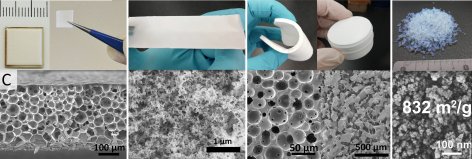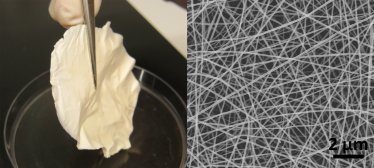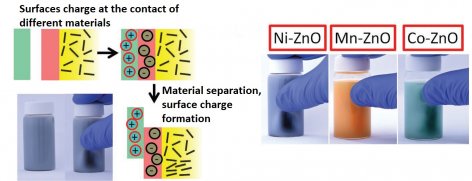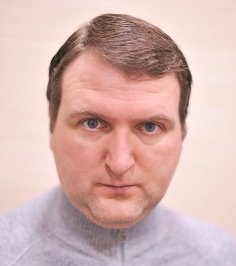Research group of material technologies
Scientific- and technological competence
Our research covers the development of oxide materials with different morphologies (incl. micro,- meso- and macroporous oxide foams), biodegradable polymers, functional hydrogels and electro-optical composite materials. Additionally, we have an ongoing project for developing novel plant growth substrates. We work with biogenic materials, both from animal and plant origin (gelatin, cellulose, chitosan, etc.). Chemical, physical and morphological modification of bio-based substances can be used to make various shape materials (fibrous nonwovens, sponges, foams, coatings, etc.) that can have applications ranging from medical implants to agriculture.
Some examples of the developed materials
- A novel type of fuel tablet that consists of silicon oxide (sand) and an alcohol that is trapped in the nanopores of an oxide. This material burns cleanly, exhibits high heat of combustion, is easy to ignite and can be used for heating food and water during camping and for fast and efficient lighting of a campfire or barbecue. Lab-scale development finished, TRL 6-7. Patent pending.

- We have developed a number of novel methods for preparing meso- and macroporous oxide materials with different morphologies that exhibit density, thermal conductivity and porosity similar to aerogels – two distinctly different methods for coating surfaces with porous oxide layers (opened and closed porosity), novel method for preparing silicone foams and a novel fast and simple method for preparing silica aerogel granules (patent pending).

- Electrospun gelatin fiber mats. Gelatin can be stabilized by using different methods, in order to obtain non water-soluble material. Fiber mats can be obtained from gelatin by using electrospinning method. The obtained material appears similar to paper or cotton wool, has similar microstructure as animal tissue and stabilized gelatin mats are usable in biomedicine as cell growth substrates.

- Nanowire suspensions that change optical properties in the electric field.

|
Image

| Martin Timusk E-mail: martin.timusk@ut.ee |
|
Image

| Fredrik Punga E-mail: fredrik.punga@ut.ee |
ERA-NET (RUS Plus) project " Bioresorbable implantable triboelectric nanogenerator devices (1.01.2021−31.12.2022)" SLTFY21097T.
Smart specialization (NSP) project " New cost-effective concepts for Click & Grow indoor gardens (1.03.2020−31.08.2022)" LLTFY20282.
Centre of excellence project "Zero energy and resource efficient smart buildings and districts (TK146) (1.01.2016−1.03.2023)" SLTFY16146T.
Start-up grant (PSG) " New aerogel-like oxide foam materials (1.01.2018−31.03.2021)" PSG70.
Some scientific publications
- M. Timusk, I.A. Nigol, S. Vlassov, S. Oras, T. Kangur, A. Linarts, A. Šutka, Low-density PDMS foams by controlled destabilization of thixotropic emulsions. Journal of Colloid and Interface Science, 626 (2022) 265-275.
- M. Timusk, T. Kangur, J. Locs, A. Šutka, M. Järvekülg, Aerogel-like silica powders by combustion of sol-gel derived alcogels, Microporous Mesoporous Mater. 315 (2021).
- M. Timusk, T. Kangur, M. Visnapuu, S. Pikker, A. Šutka, M. Järvekülg, Deposition of low-density thick silica films from burning sol-gel derived alcogels, Heliyon. 7 (2021).
- P.C. Sherrell, A. Šutka, N.A. Shepelin, L. Lapcinskis, O. Verners, L. Germane, M. Timusk, R.A. Fenati, K. Malnieks, A. V. Ellis, Probing Contact Electrification: A Cohesively Sticky Problem, ACS Appl. Mater. Interfaces. 13 (2021) 44935–44947.
- Šutka, K. Mālnieks, A. Linarts, L. Lapčinskis, O. Verners, M. Timusk, Triboelectric Laminates with Volumetric Electromechanical Response for Mechanical Energy Harvesting, Adv. Mater. Technol. 6 (2021) 1–6.
- N. Babayevska, Ł. Przysiecka, G. Nowaczyk, M. Jarek, M. Järvekülg, T. Kangur, E. Janiszewska, S. Jurga, I. Iatsunskyi, Fabrication of gelatin-zno nanofibers for antibacterial applications, Materials (Basel). 14 (2021) 1–12.
- M. Klaas, K. Möll, K. Mäemets-Allas, M. Loog, M. Järvekülg, V. Jaks, Long-term maintenance of functional primary human hepatocytes in 3D gelatin matrices produced by solution blow spinning, Scientific Reports, 11 (2021) 20165.
- A. Šutka, K. Mālnieks, L. Lapčinskis, M. Timusk, K. Kalniņš, A. Kovaļovs, J. Bitenieks, M. Knite, D. Stevens, J. Grunlan, Contact electrification between identical polymers as the basis for triboelectric/flexoelectric materials, Phys. Chem. Chem. Phys. 22 (2020) 13299–13305.
- L. Lapčinskis, K. Mālnieks, J. Blūms, M. Knite, S. Oras, T. Käämbre, S. Vlassov, M. Antsov, M. Timusk, A. Šutka, The Adhesion-Enhanced Contact Electrification and Efficiency of Triboelectric Nanogenerators, Macromol. Mater. Eng. 305 (2020) 1–5.
- A. Šutka, K. Malnieks, A. Linarts, M. Timusk, V. Jurķans, I. Gorņevs, J. Blums, A. Berziņa, U. Joost, M. Knite, Inversely polarised ferroelectric polymer contact electrodes for triboelectric-like generators from identical materials, Energy Environ. Sci. 11 (2018) 1437–1443.
- J. Metsik, M. Timusk, A. Šutka, M. Mooste, K. Tammeveski, U. Mäeorg, In situ investigation of poly(3,4-ethylenedioxythiophene) film growth during liquid phase deposition polymerization, Thin Solid Films. 653 (2018).
- T. Kangur, V. Kiisk, A. Loot, M. Timusk, M. Järvekülg, Optical functionality of micro- and nanostructured silica surfaces prepared by a sol-gel phase separation method, Thin Solid Films. 622 (2017).
- M. Timusk, A. Kuus, K. Utt, T. Kangur, A. Šutka, M. Järvekülg, M. Knite, Thick silica foam films through combined catalytic decomposition of H2O2 and sol–gel processes, Mater. Des. 111 (2016) 80–87.
- A. Šutka, M. Timusk, A. Loot, U. Joost, T. Käämbre, Polarizable Nanowire Colloids for Power Free Naked Eye Optical Detection of Electrostatic Surface Charges, Adv. Mater. Technol. 1 (2016).
- J. Metsik, K. Saal, U. Mäeorg, R. Lõhmus, S. Leinberg, H. Mändar, M. Kodu, M. Timusk, Growth of poly(3,4-ethylenedioxythiophene) films prepared by base-inhibited vapor phase polymerization, J. Polym. Sci. Part B Polym. Phys. 52 (2014).
Combustion of sol-gel derived alcogels offers a novel route for preparation of aerogel-like oxide foams.
Scientists from the University of Tartu made static electric charge visible.
https://novaator.err.ee/259860/tartu-teadlased-muutsid-staatilise-elektri-paljale-silmale-nahtavaks
Seeing static with zinc oxide nanowires.
https://cen.acs.org/articles/94/i45/Seeing-static-zinc-oxide-nanowires.html



